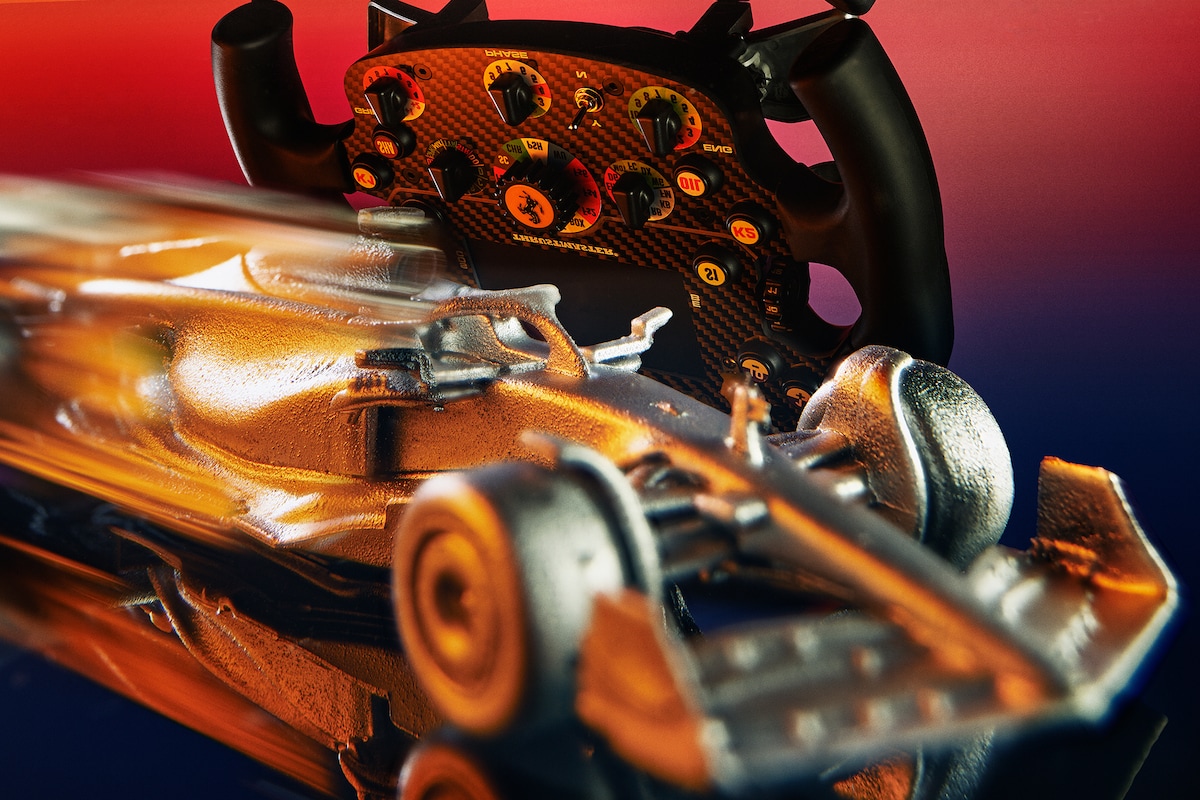
Learn about the F1 technology already in your car
- Science
- March 11, 2024
- No Comment
- 178
Turn up the volume on the radio.
Check tire pressure.
Drop down a gear to manage a steep hill.
A typical car steering wheel allows most people to accomplish these functions without taking their hands off the wheel — the same way a Formula One driver races.
F1 racing has long been a testing ground for technology that later appears in consumer cars. Even something as simple as the bolted-on rearview mirror can be traced back to Ray Harroun’s race-winning Marmon Wasp in the very first Indianapolis 500 in 1911. With big budgets and rules that allow for experimentation, F1 teams attract innovative engineers who devote their time to performance development. From new materials to energy technology, innovations in an F1 car eventually impact the future of the transportation industry.
“Racing is always about going the extra mile and looking for the most sophisticated technical solution,” said Jochen Hermann, chief technology officer at Mercedes-AMG. “That opens your mind for technologies you would not think of first for a [consumer] car.”
From racetrack to city streets
Incorporating F1 technology into consumer cars is not as simple as passing a new component over the wall from the racing side and plugging it into next year’s Mercedes G-Wagen, a luxury sport utility vehicle, or a McLaren 750S sports car.
The requirements of an F1 car are very different from the cars typically seen in a grocery store parking lot, explained McLaren’s chief technical officer, Charles Sanderson. “Basically, a Formula One car is trying to do a very fast lap time and only do that a few times,” Sanderson said. Its components are specialized just for the task of going fast.
An F1 car doesn’t have to have room for a laptop bag or be sturdy enough to survive wintry roads full of potholes for months like a consumer car must be. Designed to operate for many years, a consumer car must be suitable for a variety of drivers, young and old. “NVH [Noise, Vibration, Harshness, or in other words, how loud and jiggly something is] requirements and safety requirements are very specific in road cars,” said Sanderson.

It can be hard to trace the lineage of a feature that appears in a consumer car that first existed in an F1 machine. Often the technology will filter through other forms of racing such as IndyCar or NASCAR. Sometimes the aerospace industry tests similar innovations before the technology is available to motorists sitting in traffic on an expressway. Turbocharging, for instance, a way of increasing the power of an engine using the flow of exhaust gas, was first used on radial airplane engines. Now turbos are a common engine configuration on many modern consumer cars as well as on Formula One machines.
Not every new technological feature started on the racetrack, but as we head into the 2024 F1 racing season, engineers agree on a few important innovations that consumer cars have inherited from F1 in recent years.
Paddle shifters
Once only found in the most exotic of supercars, paddle shifters — the little pull-tabs directly behind the steering wheel that can be used to change gears in cars with automatic and semiautomatic transmissions — or adjust regenerative braking in several electric cars — can now be found in anything from a new Nissan Maxima to a 2010 Chevy Camaro. So ubiquitous is the feature that you might not even realize your car has i.
“A semiautomatic gearbox had been the subject of studies and track tests as far back as 1979,” said Emanuele Carando, head of global marketing at Ferrari, who recounted the story of why racecar drivers benefited from moving the gear shift onto the steering wheel. At the time, F1 cars still used a manual transmission, somewhat like a motorcycle where the driver would click up and down the gear range rather than moving a lever on a manual car. The movement required precious time and took hands off the steering wheel.


In 1989, Nigel Mansell won the Brazilian Grand Prix racing in a F1-89, a car equipped with the first electrohydraulic gearshift on the steering wheel. Ten years later, the automotive world was abuzz when the first consumer car with similar technology debuted at the 1997 Frankfurt Motor Show. It was Ferrari’s F355 F1 Berlinetta.
“Its electrohydraulic system allowed drivers to keep their hands on the steering wheel during gear changes, reducing shift times and improving integration with the engine,” said Carando. The technology appeared in more expensive performance cars first, then mainstream cars.
Carbon fiber
McLaren shook up the racing scene in 1981 when it built a tub, the capsule in which the driver sat, out of carbon fiber instead of metal and used that as the main structure of its MP4/1 racecar. Carbon fiber combines strong carbon threads with resin, which hardens into a material that is lightweight yet strong enough to replace steel in many applications. The aerospace industry had been using the material to make the blades of some jet engines.
“The root of that [carbon tub] goes back to the lightweighting philosophy,” Sanderson said, referencing an idea common among sports car builders that the best way to be fast and nimble is to start with the least amount of mass: Think of a gazelle’s advantage, should it be chased by an elephant through a labyrinth.
“Maybe it’s not a technology,” Sanderson continued, “but it’s a philosophy transfer very strongly driven within F1. The core principle to delivering lap times is lightweighting.”
After the MP4/1’s success on the racetrack, McLaren continued using carbon in its racecars and eventually developed a consumer car using the technology, the aptly named McLaren F1 in 1995. Other car manufacturers soon followed.
“Since then,” said Sanderson, “every vehicle that we’ve built has had a carbon [tub]. It’s got a lot of advantages, not just in lightweighting, but in stiffness and in safety.”


Because it’s still an expensive material, carbon fiber is used sparingly by car manufacturers, usually as automotive jewelry. Its light-catching black weave gives a sporty but elegant look to console covers and door trim inlays. Some car manufacturers use it to create aerodynamic elements such as rear wings, front spoilers and scoops.
In more performance-oriented models, carbon fiber can be found in structural parts of the car such as wheels and cabins. On a Ferrari 296 GTB, one of the many expensive options is a carbon fiber diffuser that channels air underneath the lowered body of the vehicle. Sporty cars from mainstream brands such as Honda or Chevrolet use carbon fiber for add-ons like rear wings.
For more affordable cars manufactured in large quantities, carbon fiber might be too expensive to justify its weight-saving benefit just yet. Exceptions include BMW’s electric SUVs, the tiny i3 and the larger iX, which have passenger cabins made of carbon fiber.
“I think as those technologies continue to improve, they’ll be more valid for the mass market,” said Sanderson. For electric cars weighed down by heavy lithium batteries, mass must be eliminated in other places. “Lightweighting becomes more important, as does safety. Both of those things are delivered really well by carbon.”
Hybridization
Unlike paddle shifters and composites, hybrid engines — an electric motor coupled to a gasoline engine to maximize fuel efficiency — were placed in consumer cars first. F1 racing adopted the technology later.
Fuel efficiency is the reason. From a marketing perspective, it seemed prudent to F1 executives to follow the automotive industry in a switch from large V-8 engines to smaller engines combined with an electric motor. It would be an interesting new engineering challenge. It would also keep F1 more relevant to advertisers and address its environmental impact in a world affected by climate change.
F1 engineers quickly saw the possibilities of recovering energy from braking, and even from the heat of the engine, to be used later as an electronic power boost. This idea of using stored energy as a performance enhancer, not just a gas-saver, is now available in some consumer cars.
“KERS [Kinetic Energy Recovery System] definitely began in Formula One,” said Sanderson “In fact, I think McLaren and Honda were developing the KERS concept. Regenerative braking, basically. I distinctly remember having a discussion with our Formula One team about the battery that was going into their KERS system in 2014.”

The Mercedes-AMG C63 is a large luxury sedan known for its big engine and impressive performance. The 2024 version of the C63 S has an engine half the size of the previous generations. By combining that small engine with an electric motor and lightweight battery, the 2024 model creates more power while delivering better fuel economy. It’s a combo that comes straight from F1.
“The special cooling system of the batteries of the AMG C 63 is also based on the technology we use in Formula One,” said Hermann. “It’s not only hardware. Software is getting more important.”
New innovations are already in the race paddock. Gains made in battery technology and energy management will improve consumer electric vehicles, and advancements in biofuels may help cars transition away from fossil fuels to lessen the carbon footprint.
About this story
Elana Scherr is senior features editor and columnist at Car and Driver. Scherr has been covering the automotive scene, from racetracks to new car reviews for more than a decade, and spends her weekends tinkering on a collection of vintage cars.
Editing by Bronwen Latimer. Photo editing by Haley Hamblin. Design and development by Audrey Valbuena. Design editing by Betty Chavarria. Copy editing by Anne Kenderdine.
#Learn #technology #car









